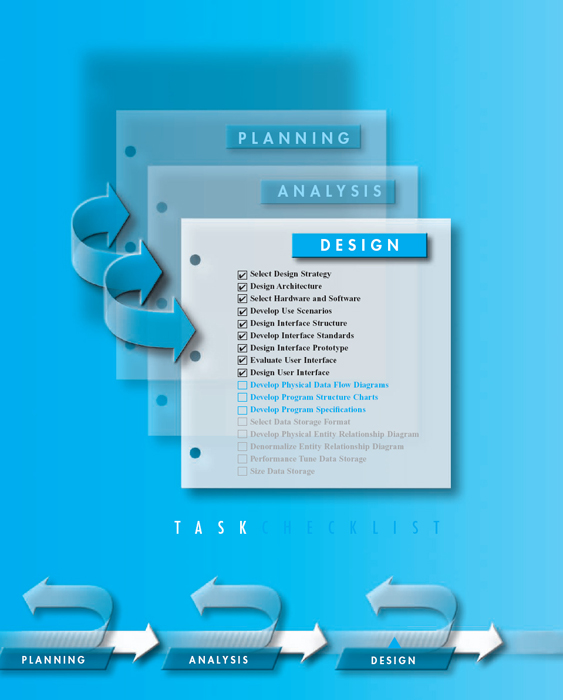
CHAPTER 10
PROGRAM DESIGN
Another important activity of the design phase is designing the programs that will perform the system's application logic. Programs can be quite complex, so analysts must create instructions and guidelines for programmers that clearly describe what the program must do. This chapter describes the activities that are performed when the program design is developed. First, the process of revising logical data flow diagrams into physical data flow diagrams is outlined. Then, two techniques typically used together for describing programs are presented. The structure chart depicts a program at a high level in graphic form. The program specification contains a set of written instructions in more detail. Together, these techniques communicate how the application logic for the system needs to be developed.
OBJECTIVES
- Be able to revise logical DFDs into physical DFDs.
- Be able to create a structure chart.
- Be able to write a program specification.
- Understand the use of pseudocode.
- Become familiar with event-driven programming.
CHAPTER OUTLINE
Introduction
Moving from Logical to Physical Process
Models
The Physical Data Flow Diagram
Applying the Concepts at Tune Source
Designing Programs
Structure Chart
Syntax
Building the Structure Chart
Applying the Concepts at Tune Source
Design Guidelines
Program Specification
Syntax
Applying the Concepts at Tune Source
Summary ...
Get Systems Analysis and Design, 4th Edition now with the O’Reilly learning platform.
O’Reilly members experience books, live events, courses curated by job role, and more from O’Reilly and nearly 200 top publishers.

